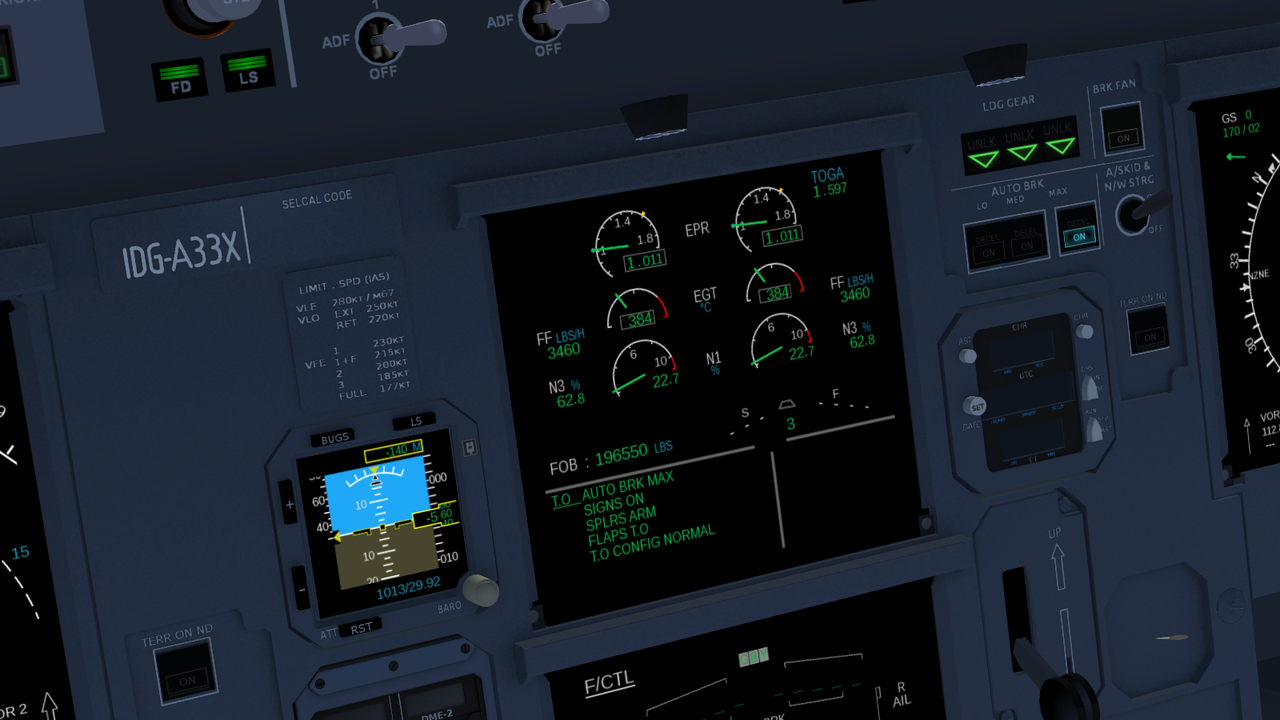

A high-performance pure turbojet might be very much higher. For modern afterburning supersonic military engines, exhaust will likely be higher than the default. As a rough guess, try numbers around 1000 knots (500m/s) for turbofans. High-bypass turbofan engines will have significantly lower exhaust speeds. The default value is 1555 knots (800m/s) and represents a somewhat early turbojet. (Not the bypass air leaving the fan in turbofan engines.)Įxhaust speed may be difficult to find. If you know how much reverse thrust the engine can produce, you can find a good reverse value by calculating reverse_thrust/thrust.Įxhaust speed is the air leaving the turbine. For example, using the default 0.2 setting, reverse thrust is 0.2 * forward thrust. Reverse is a scalar applied to thrust when reversers are engaged.
FLIGHTGEAR START ENGINE CODE
Unfortunately the fuel consumption rate is set in the YASim code and can't be tuned.
FLIGHTGEAR START ENGINE FULL
I discuss engine controls at the end of this guide.Īs you might expect, using afterburners radically affects fuel consumption, consuming additional fuel at the rate of 3.5 times the afterburner/thrust factor at full reheat. The reheat control is a throttle on the amount of fuel being dumped into the exhaust stream. In YASim, afterburner thrust creates a power ratio that is added to normal thrust after being scaled by a reheat control: thrust = thrust * (1 + reheat * (afterburner/thrust - 1)), where the reheat control varies from 0 to 1. This number will of course be considerably greater than the no-afterburner dry or military thrust. If the engine uses an afterburner, find the total afterburner or wet thrust and enter that for the afterburner attribute. If thrust can be reversed, a third attribute can be used:įor simple thrust, find the engine's maximum rated no-afterburner thrust and enter that for thrust attribute. If the engine has afterburner capability, a second attribute is also used. Thrust may be declared using a single thrust attribute. Let's look at the other engine attributes. Lacking hard data, try to find a cut-away diagram showing the actual engine position within the fuselage or a nacelle and make a guestimate for the center of mass.įor mass, enter the weight of the jet engine in pounds. Probably you'll have to estimate this location, unless you have really good engineering data for the aircraft. Remember the YASim coordinate system: X axis is forward, Y is left, and Z is up. The jet element must contain the physical location (ie, center of mass) of the engine expressed as x, y, and z coordinate attributes. Refer to the above example for a typical case. In practice, however, most should be populated with values. All you're required to populate are the engine location, the mass, and thrust. Most attributes for jet engines are optional. Let's look at the jet engine elements and their possible attributes and controls in detail. Many jet engines will have a thrust-reversing mechanism, and military jet engines will often have afterburner controls as well. A good estimate is better than a wild guess or numbers taken from another unrelated YASim FDM.Īny jet engine definition is likely to have these elements: If you can't find exactly what you need, try to find information for similar components for other aircraft. I've had good luck finding data from published service or overhaul records. Most of these details are not too hard to find from engine specifications. The approximate location where thrust is applied The approximate location of the engine mass Maximum wet thrust (thrust with full afterburner) (optional) If your aircraft has two jet engines, you'll have two definitions, with their engine ID numbers corrresponding to the order of definition.īefore configuring your YASim jet engines, you'll need to gather some data about the engine: Like propeller engines, each jet engine should have its own engine definition. There are a few other interesting options like afterburners which I'll cover in this guide. Simplicity, like complexity, comes with a cost, and I'll address some of the issues and suggest some work-arounds at the end of this guide.Ī typical YASim jet engine configuration looks like this: The internal code for a jet engine is simpler than propeller engines, so it's easier to follow and understand what each element is doing. The good news is that Flightgear's YASim jet engine simulation is much easier to set up and somewhat easier to tune than piston-driven propeller engines.


 0 kommentar(er)
0 kommentar(er)
